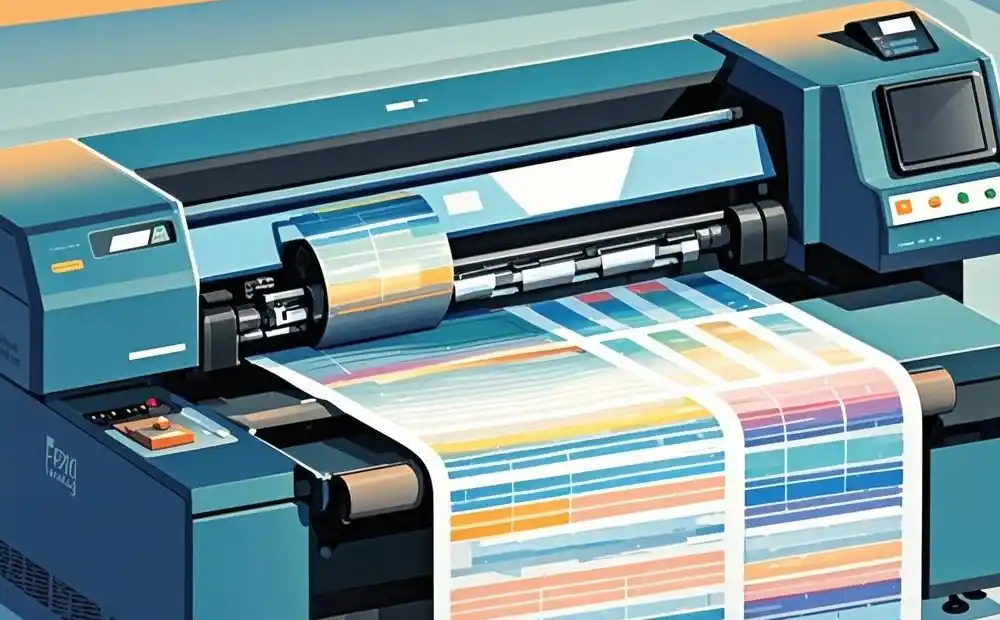Gravure vs. Digital Printing Cost Comparison
Date: Mar 28 2025 From: Star Color Views:
I. Industry Trends and Technology Selection Background
The printing industry is currently experiencing a critical juncture of technological iteration and market differentiation. Traditional gravure printing is transitioning towards more environmentally friendly water-based and UV inks, while digital printing, as a new technology, is rapidly seizing the market. According to the 2024 Global Printing Technology White Paper, gravure printing still holds a 45% share of the packaging printing brush market due to its high stability and low-cost advantages; Digital printing, on the other hand, is rapidly rising in the short and personalized fields with an average annual growth rate of 12%. There are significant differences in cost structure between the two technologies, and how to choose the optimal solution based on order characteristics, quality requirements, and environmental standards has become the key to improving profitability for enterprises.

II. Core Cost Comparison Analysis
1. Fixed Cost Comparison
| Cost Item |
Gravure Printing |
Digital Printing |
| Equipment Investment |
$735,000 - $2,940,000 (8-color) |
$220,000 - $735,000 (high-speed) |
| Plate Cylinder Cost |
$7,350 - $22,000 per set |
$0 (no plate required) |
| Facility Requirements |
Requires ventilated/thermostatic workshop |
Standard factory acceptable |
| Annual Maintenance |
8%-12% of equipment value |
5%-8% of equipment value |
Key Difference: Gravure has higher upfront costs but amortizes plate costs over million-meter orders; digital printing eliminates plate fees for orders under 50,000 linear meters.
2. Variable Cost Comparison
| Cost Item |
Gravure Printing |
Digital Printing |
| Ink Cost |
$0.05 - $0.09/sq.m (solvent-based) |
$0.12 - $0.22/sq.m (UV ink) |
| Substrate Waste |
5%-8% (startup waste + registration error) |
1%-3% (precision positioning) |
| Energy Consumption |
1.2-1.8 kWh/sq.m (hot air drying) |
0.3-0.5 kWh/sq.m (UV curing) |
| Labor Cost |
8-12 operators/line (plate management) |
2-4 operators/line (high automation) |
Data Insight:
- Gravure ink costs become competitive for orders >500,000 linear meters
- Digital printing reduces short-run costs by 30%+ through waste and labor savings
3. Environmental Cost Comparison
| Indicator |
Gravure Printing |
Digital Printing |
| VOCs Emissions |
20-50g/sq.m (requires abatement) |
<5g/sq.m (solvent-free UV ink) |
| Wastewater Treatment |
Chemical treatment system required |
Zero wastewater discharge |
| Solid Waste |
3% annual plate cylinder scrappage |
No consumable waste |
Compliance Cost: Gravure requires $220,000 - $440,000 additional environmental equipment; digital meets EU CE certification.
4. Production Efficiency Comparison
| Indicator |
Gravure Printing |
Digital Printing |
| Maximum Speed |
350m/min (BOPP film) |
200m/min (coated paper) |
| Changeover Time |
4-6 hours (plate cylinder replacement) |
<30 minutes (software adjustment) |
| Minimum Order |
100,000 linear meters |
100 linear meters |
Application Scenarios:
- Gravure: Long-run packaging (food bags/pharmaceutical boxes), high-gloss finishes
- Digital: Personalized labels, variable data printing, rush orders
III. Cost Break-Even Calculation
Using the cost model (Total Cost = Fixed Cost + Variable Cost × Volume), the economic crossover points are:
- Break-Even Point: ~80,000 linear meters/year
- Cost Differential:
- <50,000 linear meters: Digital saves 25%-40%
- 50,000-500,000 linear meters: Gravure cost advantage emerges
- >500,000 linear meters: Gravure saves 15%-25%

IV. Decision Recommendations
- Order-Specific Strategy
- Short-run/personalized (<100,000 linear meters): Prioritize digital
- Long-run/standardized (>500,000 linear meters): Gravure is more economical
- Mid-range (100,000-500,000): Evaluate ink type (solvent/water-based) and environmental requirements
- Technology Upgrade Paths
- Gravure: Invest in ceramic-plated cylinders (3x lifespan) + solvent recovery systems (18% material cost reduction)
- Digital: Deploy AI color management (40% proofing cost savings) + high-speed UV inkjet (20% productivity gain)
- Future Trends
With maturing UV gravure (45% energy reduction) and declining digital ink costs (8% annual decrease), cost gaps will narrow further - hybrid production (gravure + digital) will become mainstream.
Conclusion: Under tightening environmental regulations and consumption upgrades, gravure and digital printing demonstrate differentiated competitive landscapes. Enterprises should establish dynamic cost evaluation models based on order structures, quality requirements, and sustainability goals to achieve continuous improvement in cost competitiveness through technological innovation and production optimization.
 RU
RU
 EN
EN
 CN
CN


